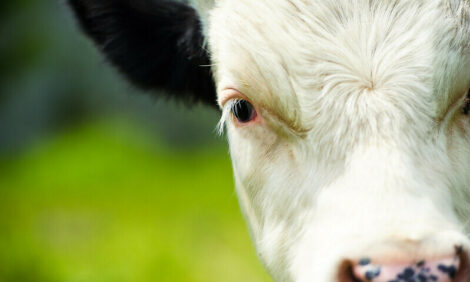



Leptospirosis infection can cost £100/cow
UK - Failing to protect dairy cattle from leptospirosis immediately prior to turnout can easily shave over 1p per litre off the average 7,500-litre herd’s milk cheque, reports Farming UK.Two strains of leptospirosis (hardjo-bovis and hardjo-prajitno) affect UK cattle and turnout is the key risk period for transmission of these two disease strains. At grass, uninfected cattle are suddenly exposed to the urine of any infected animals that may be shedding leptospires. Moist spring grass is also a relatively favourable environment for leptospires, allowing them to survive for longer outside the host.
In spite of this heightened disease risk period and the potential financial loss from infection, only around one herd in three vaccinates against the disease before turnout. Yet according to results from the National Bovine Leptospirosis Information and Screening Service (BLiSS), leptospirosis is all but endemic in the national dairy population with over 70% of unvaccinated herds screened now carrying the infection.
“Unfortunately, leptospirosis is now such an insidious, sub clinical disease that many cattle producers are simply not aware that it is impairing optimal herd performance. Generally, infected cows don’t show dramatic symptoms, but the disease does affect cow fertility with even conservative estimates putting the cost of infection at around £100/cow,” points out Schering-Plough Animal Health livestock veterinary adviser Andrew Montgomery MRCVS.
“Although most producers don’t see the abortion storms the disease used to cause years ago, infected herds do report poor conception rates and increased breeding costs. Apart from a tangible increase in AI costs, there are also the losses in milk yield associated with extended calving intervals, as well as high cull rates especially in block calving herds.”
To avoid these financial losses, Andrew Montgomery recommends that all unvaccinated dairy herds should screen for infection using a simple bulk milk test, which avoids the need for blood sampling individual animals. “The test results will show the level of infection in the herd and provide a starting point for developing a strategy to vaccinate against both strains of the disease with your vet,” he explains. For beef herds, blood sampling is the only practical diagnostic option.
Dairy farmers can ask their vet to screen a bulk milk sample for leptospirosis through the BLiSS scheme. Alternatively, producers who send milk samples to NMR for fat, protein and cell count analysis can also ask for a leptospirosis screen on these samples as well, using the NMR Healthcheck Service.
TheCattleSite News Desk


